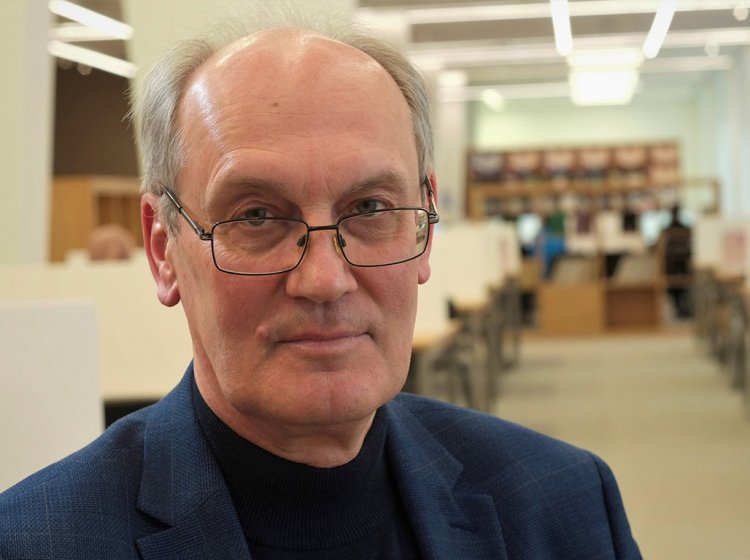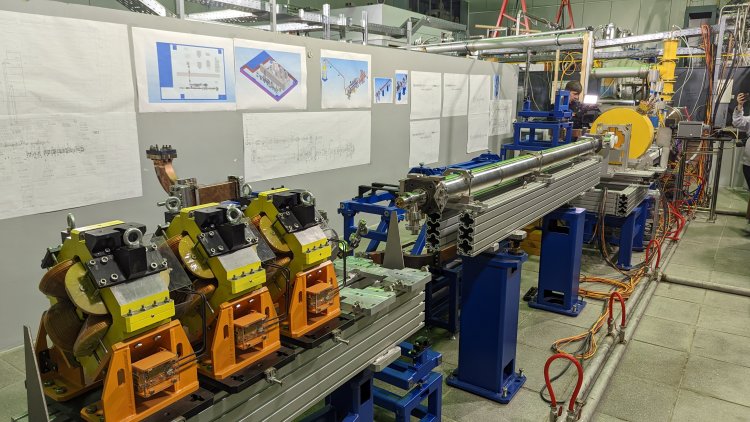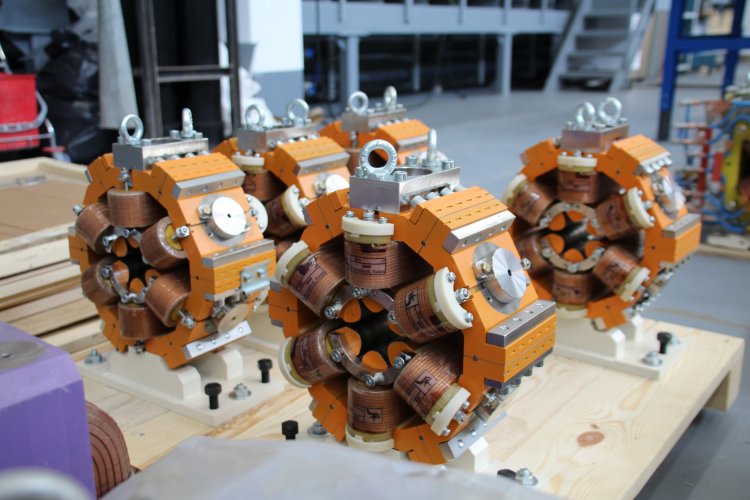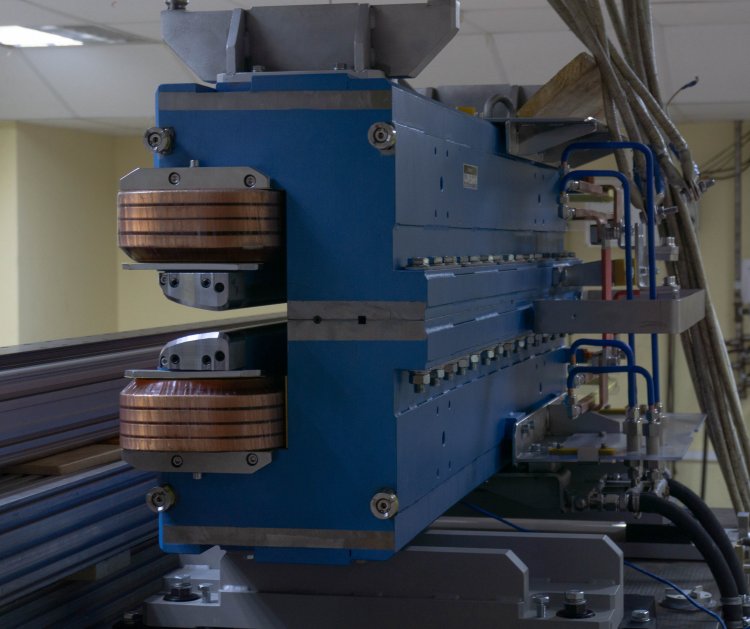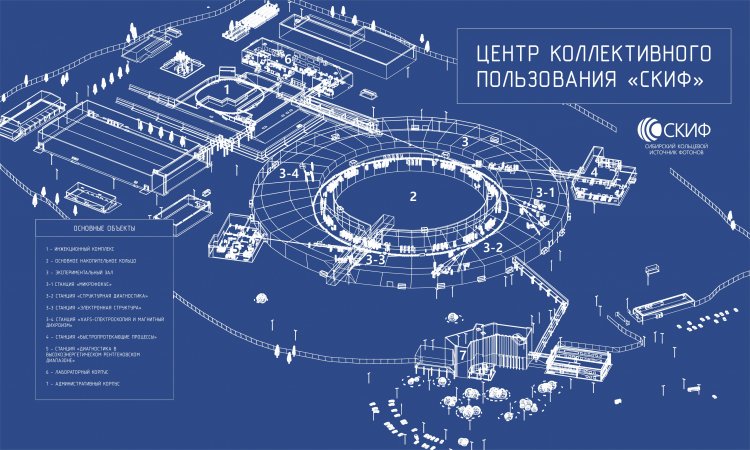After the decades of work at the forefront of science, the Budker Institute of Nuclear Physics continues to create synchrotron radiation sources, colliders, and other installations meant for world discoveries. Right now, the scientists are focused on a new record: they continue building a synchrotron radiation source with unique parameters. What will SKIF, a multipurpose megascience installation for knowledge and technology of the future, be like?
Evgeny Borisovich Levichev is Doctor of Physical and Mathematical Sciences, Corresponding Member of the Russian Academy of Sciences, Deputy Director for Research at the Institute of Nuclear Physics of the Siberian Branch of the Russian Academy of Sciences, and Director of the SKIF Center.
— Scientific publications and media often mention colliders, accelerators, colliding-beam rings, synchrotrons. What is the difference between them? And what tasks are the specific types of installations meant for?
— It is believed that charged particle accelerators emerged thanks to the experiments conducted by Ernest Rutherford in 1906—1911. The scientist used to irradiate the thinnest gold foil with alpha particles produced from a natural radioactive isotope. When studying the scattering of alpha particles, the scientist laid down the famous planetary model of the atom assuming that the atom center contains a tiny heavy nucleus, while light electrons fly around the nucleus.
Later, in 1927, Rutherford wrote that if it were possible to obtain particles with energies greater than those emitted by natural sources, “this would open up very interesting research areas.”
Rutherford rightfully expected that accelerators would help scientists study matter on the smallest scale. These expectations prompted Rutherford’s students and followers to start developing the first particle accelerators in the 1930s.
We can easily understand from the name that the installation accelerates charged particles: protons, ions, electrons. The first accelerators were created exceptionally for studying the physics of the microworld. At that, the experiments used to follow the scheme developed by Rutherford. The beam gained energy and was driven out of the accelerator to hit a fixed target, after which physicists studied the reactions that occurred when the accelerated particles of the probing beam and the target interacted.
However, the scientists quickly realized that this scheme was not very good, as it was energetically unfavorable. The largest share of the incoming particles’ energy was spent on the target recoil, like it happens when a billiard ball collides with a still ball to set it in motion. And only a small portion of the energy in such installations was spent on the reaction itself.
In 1943, Norwegian engineer Rolf Wideröe proposed his idea to use colliding beams. It was kind of an innovative view at that time. The thing is that the density of a beam is many orders of magnitude lower than the density of a solid fixed target, and it is very difficult to make particles meet. Therefore, no one had dared to create such installations for quite a long time. Only in the early 1960s, the employees of several laboratories — at Stanford University (USA), the Frascati National Laboratory (Italy), and the Institute of Nuclear Physics of the Siberian Branch of the USSR Academy of Sciences — ventured to take a bold step: create the first colliders.
As for me, I do not like the word “collider” very much. We were among the first scientists and proposed our own name: “installations with colliding electron-positron beams.” However, today, the success of the Large Hadron Collider at CERN has made the term “collider” much more commonly used.
It gradually became clear that accelerated beams of charged particles could be used not only to the benefit of fundamental physics, but also in numerous applications. For example, proton and ion synchrotrons effectively treat malignant tumors. While the so-called implanters, i.e., small ion accelerators, provide semiconductors with necessary properties. If accelerators had not appeared in the 20th century, we would not have had microchips that are now installed in every phone, TV, and computer. Small electron accelerators are used to irradiate, for example, cable insulation. In this case, it becomes more heat-resistant and durable. These cables are used to build airplanes, missiles, submarines, and the like.
While working with the first cyclic accelerators, scientists discovered an interesting phenomenon. When light particles (electrons and positrons) move on a circular orbit, radiation is observed tangentially to their motion. They called it “synchrotron radiation,” as it was first observed specifically in synchrotrons. It turned out that several unique properties of synchrotron radiation make it a powerful tool for studies in various areas of science and technology.
— Is it true that synchrotron radiation was initially called “parasitic”?
— In the very beginning, it was considered harmful, as synchrotron radiation actually carries energy away from the accelerated electron beam. For this reason, the beam energy had to be renewed all the time using a system of accelerating resonators that were supposed to compensate for the lost energy. However, “parasitic” was usually used to refer to the residual mode of operation with synchrotron radiation at the first accelerators where the priority was particle physics.
SKIF linear accelerator. Author: Alexandra Malygina. Courtesy of the SKIF Center press service
— Have you managed to solve this problem of energy loss at present?
— No, we haven’t. The principle of operation has not changed in any way. The installations are equipped with high-frequency resonators that accelerate particles. However, here we come across one more problem. Since the power of synchrotron radiation scales in proportion to the fourth power of energy (being a very high power) rather than in proportion to the energy of charged particles, synchrotron radiation impedes the creation of huge cyclic accelerators of light charged particles — electrons and positrons. This is the reason why it is difficult and energetically unprofitable to build high-energy ring electron-positron colliders.
Which is why, in the 1970s, the Institute of Nuclear Physics introduced the first project of the VLEPP linear electron-positron collider (based on colliding linear electron-positron beams). Today, the world knows only two linear collider projects: one in Japan (the International Linear Collider) and the other at CERN called the Compact Linear Collider. However, this compactness is, of course, relative. The entire installation is about 30 km long.
— It is clear that theoretical physicists place a specific order to create a particular installation. But what helps engineers understand what elements and characteristics should the final installation have to solve the tasks set?
— Your description is actually not true enough. Each new installation is usually built for the tasks and experiments that have not been performed before. Simply stated, it becomes record-breaking in some parameters. As a rule, these parameters are critical and hard to implement. Therefore, a new accelerator is created through successive approximations, in a step-by-step way. Everyone is engaged in this process: theoretical physicists, experimental physicists, and accelerator physicists.
Our activities have no terms of reference. More likely, we do collective and, I must say, very interesting work at the forefront of scientific research. And new ideas are always interesting.
— Let us talk about the development of one of the most sought-after projects — the Siberian Ring Source of Photons. What will modern physics get thanks to this installation?
— Like any synchrotron radiation source, the future SKIF will become a multipurpose installation. It will be very useful not only for physics. There are dozens or even hundreds of techniques based on synchrotron radiation. Besides, these installations are interesting not only to physicists. Today, chemists, biologists, microbiologists, geologists, and even archeologists work with synchrotrons. Therefore, for example, the Siberian Synchrotron and Terahertz Radiation Center was established at the Institute of Nuclear Physics based on the existing synchrotron radiation sources, and about 30 institutes take part in its work.
SKIF booster equipment. Author: Anna Ershova / Courtesy of the SKIF Center press service
As for SKIF, we have managed to provide it with some record-breaking parameters. SKIF will have the highest brightness among its “classmates” — synchrotron radiation sources with an electron energy of up to 3 GeV (or 3 billion eV). This means that it will help us conduct more up-to-date and unique experiments. Right now, scientists from various institutes of the Siberian Branch of the Russian Academy of Sciences develop experimental stations — the research equipment that will use the unique properties of SKIF.
— We often hear that a 4+ generation synchrotron is being created as part of the SKIF project. Does it characterize the increased brightness of the installation you are talking about?
— Right. In physics, synchrotron radiation sources are usually divided into generations. Each new generation increases installation efficiency by approximately one order of magnitude. Thus, the first-generation installations were mainly focused on particle physics. However, upon the completion of a particle physics program, 10–20% of the time was spent on synchrotron radiation.
Gradually, the scientific community realized that experiments with synchrotron radiation are also very interesting and can be made in various sciences. This gave rise to the second generation — installations meant only for experiments with synchrotron radiation. Then even more advanced installations, i.e., the third generation, appeared. They are most numerous today. There are about 30 installations of that kind in the world. They have given the best results over the past two or three decades. In particular, a number of the Nobel Prizes were awarded for experiments using synchrotron radiation.
Unfortunately, Russia has no third-generation installations of that kind. We had and still have first- and second-generation accelerators, but when the entire world began to build third-generation sources, our country had Perestroika, and these sources took a back seat all at once. Thus, we skipped this period.
First magnet of the SKIF storage unit. Author: Ivan Kuksanov / Courtesy of the SKIF Center press service
Fortunately, Russia has recently become capable of spending quite a lot of money on a serious scientific infrastructure, so we have managed to start creating SKIF, a fourth-generation synchrotron.
Why are we talking about generation 4+? The thing is that there are some physical fundamental restrictions on increasing brightness. They are already being reached in SKIF. For further development, we need new ideas that are unavailable now. Therefore, we are talking about generation 4+ as a source that has reached the limit in terms of the phase volume of an electron beam, in particular, by brightness within a certain wavelength range being optimal for researchers.
— Does this installation have any analogs in the world or do other countries plan to build it?
— Yes, it does. In fact, there are three fourth-generation synchrotron sources in the world now. They are the MAX IV facility at Lund University in Sweden; the European Synchrotron Radiation Facility (ESRF) in Grenoble, France; and the third one, Sirius, in Brazil. SKIF will join them soon. For comparison, the first-born MAX IV facility had a design emittance (source phase volume) of 320 pm (picometers), while our installation has 75 pm. The lower the emittance, the greater radiation brightness can be obtained, all other things being equal.
Actually, using, among other things, the achievements of the entire world, we have managed to implement such a major project in just several years. We are speaking about record-breaking parameters, but this is not the limit either. Progress is unstoppable. Probably, we will soon see other large-scale projects, including those using our experience. Time will tell.
— We found out in October 2022 that the first stage of the linear accelerator had been launched and its injection part had been assembled and tested. How successful were they?
— I would like to point out that the manufacture of the accelerator part of the synchrotron radiation source is regulated by the contracts signed with the Institute of Nuclear Physics of the Siberian Branch of the Russian Academy of Sciences. The project also implies creation of experimental stations, but they are being prepared by other institutes and organizations.
Right now, we actively work on manufacturing a magnetic system and vacuum chambers for accelerators. And one of the accelerator's key elements is actually its injector — a device that produces the first electrons, the first electron beam that is later accelerated.
Of course, it is quite difficult to accelerate the beam to an energy of 3 billion eV at once. Therefore, we use a cascade injection system where several installations accelerate the beam to the final value. In our case, this is a linear accelerator with an energy of 200 MeV. The beam from the linear accelerator is then injected into a booster, or intermediate, synchrotron to accelerate the electron beam to 3 GeV. Probably, the most challenging section on this entire accelerator path is the first meters. Low-energy electrons can be affected by various disturbing factors, such as the Earth’s magnetic field or metal, steel structures located near the beam. Therefore, the team faces a difficult task: to properly assemble and design the accelerator's first part where electrons become relativistic, i.e., particles with a speed close to the speed of light.
Without waiting for the time when the SKIF buildings are ready, we decided to build the first part of the linear accelerator on our own at the Institute of Nuclear Physics. It consists of an electron source that we call “electron gun” and several other components. In October, we launched the very first part of the accelerator — about 1.5 m long. We managed to accelerate electrons to about 1 MeV and make them reach a relativistic speed when the electrons themselves are not that “afraid” of disturbing factors anymore. We measured all the parameters, and they turned out to be good. This means that the beam parameters comply with the design parameters.
We also faced the negative impact of the sanctions. We had to create some equipment that we had planned to procure from foreign companies in a short time on our own at the Institute of Nuclear Physics. For example, our engineers developed a good modulator (a source of high-voltage very short pulses) with excellent parameters. In my opinion, this is a significant step. Therefore, at this stage we are already creating a beam with the required parameters. Everything is going well at the moment.
— When do you expect installation construction completion and launch?
— According to the plan, a major part of the injector that includes a linear accelerator and a booster synchrotron will be ready in late 2023. At this stage, scientists will be able to work directly with the beam in the science town of Koltsovo (where SKIF is being assembled), if builders manage to erect the corresponding buildings. And in late 2024, we plan to start commissioning the entire facility and commence work with synchrotron radiation beams, while gradually creating experimental stations.
The preparatory period at the construction site is over now. The detailed design phase is underway.
— How many experimental stations do you plan to create at the Common Use Center?
— The first stage implies six experimental stations. However, in total, there may be up to 46 different synchrotron output channels. Our experience shows that up to 2,000 research projects a year can be implemented with such a good, advanced synchrotron radiation source. The Common Use Center will be providing time on synchrotron radiation output channels for free upon request from research groups and institutes. The main thing is that the findings of these research studies or experiments using the installation should be published in a scientific journal.
— Do your colleagues from other institutes take interest in the construction stages?
— Yes, of course. We have very close ties with many institutions in Russia. They are the institutes that already have cooperation experience thanks to their joint work at the Siberian Synchrotron and Terahertz Radiation Center. That is why they would like to continue their research. Many of them are also engaged in creating experimental stations having the equipment they will need in the future.
The important factor I should mention is staff training. To operate such a large and advanced facility, we need many specialists, but they are available now. Of course, training programs already exist. Both Novosibirsk State University and Novosibirsk State Technical University have them. We get help from Tomsk State University where they plan to commence staff training specifically for the needs of SKIF. Right now, we expect university graduates to join the project as soon as possible.
SKIF facilities layout. SKIF construction site. Summer 2022. Courtesy of the SKIF Center press service
After launching the injector, we plan that it will work uninterruptedly, so that the young SKIF team could undergo training on it and master up-to-date and even sometimes unique equipment. Therefore, along with training, we need to introduce practical training using the real-life installation to have sufficient staff to work with it by the time when the entire large and complex facility is launched. This is very important, because otherwise we may get good working “hardware,” but there will be no one to use it.
Photos in the text and on the main page: Author: Anton Veselov. Provided by the press service of the Central Collective Use Center "SKIF"
